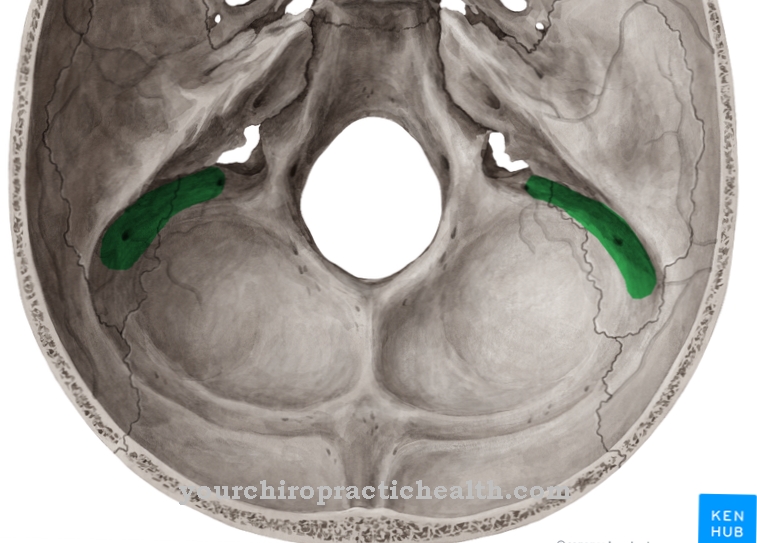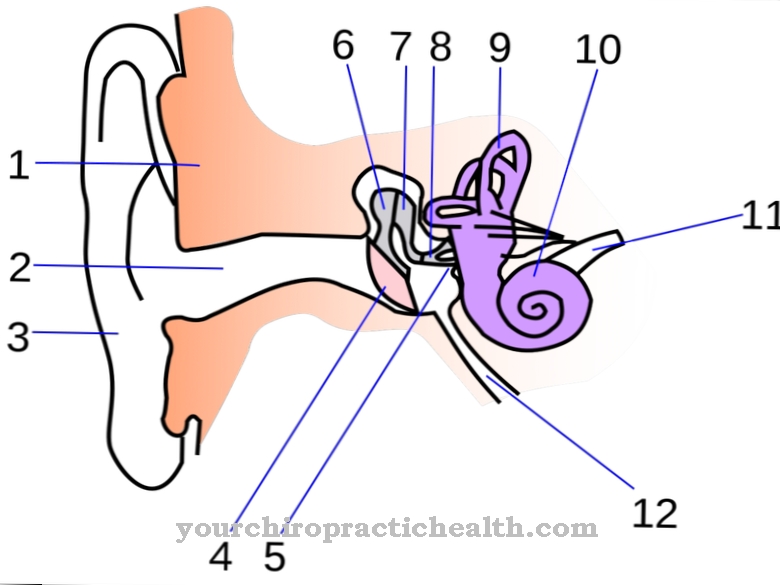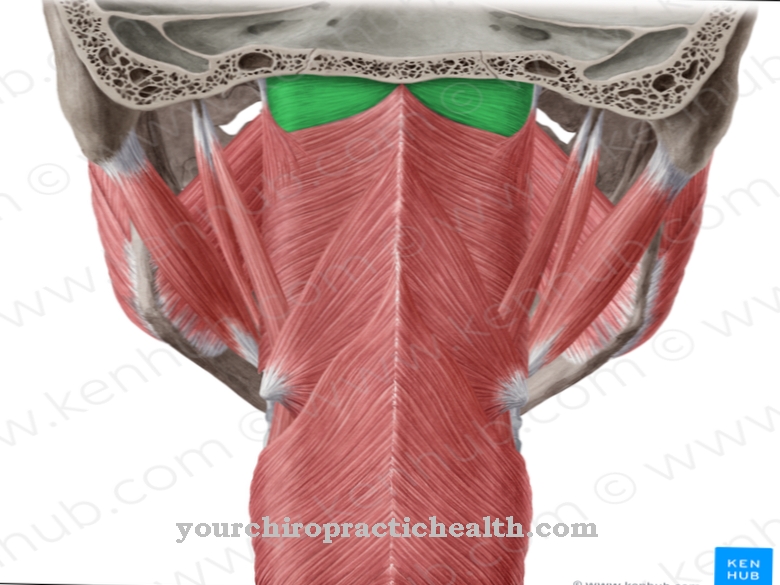In order for us to be able to hear sounds, a finely tuned interplay of different areas of the inner ear is necessary. The Cochlea (Cochlea) is the switching point to the brain.
What is the cochlea?
The cochlea is the actual hearing organ in the inner ear. It consists of special hair cells. When a sound hits these sensory cells, they start to move and the sensory cells convert the mechanical stimuli into electrical signals that are transmitted to the brain via the auditory nerve. Because it looks like a snail that has withdrawn into its house, it is called the "cochlea".
Anatomy & structure
The cochlea has two and a half coils in the shape of a snail and is surrounded by bones in the petrous bone. In it there are three tubes, one above the other, filled with fluid:
- Atrial staircase (scala vestibuli)
- Snail duct (Scala media)
- Timpani staircase (Scala tympani)
These passages are separated by fine membranes. The base area of the cochlea is located directly behind the middle ear with the ossicles and is separated from the middle ear by two membranes (oval and round window). The foot of the stapes is movably connected to the oval window. Behind it is the atrium staircase, which passes over the Reissner membrane into the cochlea where the actual hearing organ, the Contiorgan (named after the Italian anatomist Alfredo Conti) with its fine hair cells, is located.
The cochlea opens into the tympanic staircase via the basilar membrane. At the top of the snail, the vestibule stairs and the tympanum stairs are brought together in the snail's hole. Both contain a clear liquid (perilymph), while the cochlea contains another liquid (endolymph). In the organ of Corti there are inner and outer hair cells with different tasks. The inner hair cells are responsible for transmitting the sound signals to the brain.
Function & tasks
When hearing, sound waves are first transmitted through the ear canal to the eardrum, which begins to vibrate due to the sound waves. This sets the three ossicles in the middle ear (hammer, anvil, stapes) in motion.
The sound waves are transmitted through a fluid-filled tube into the bony housing of the inner ear to the actual hearing organ, the cochlea. This snail-shaped structure filled with liquid transmits the vibrations to the upper end of the fine sensory cells, where they are converted into nerve impulses and passed on to the brain. We perceive these impulses as tones.
This makes the cochlea the most important interface to the brain. If only some of these fine cells are damaged, an uncontrolled stream of nerve impulses is received and sent like the ringing in the ears in tinnitus.
Diseases
There are various diseases of the inner ear in which the cochlea can be involved. One cause can be stress. We are exposed to a certain amount of noise every day and often have to work under psychological pressure. This stress is transmitted to the inner ear and can lead to ringing in the ears (tinnitus) and even sudden hearing loss.
Affected people then suddenly no longer hear properly in one ear and can perceive noises in the ears and pressure on the affected ear. Sudden hearing loss is often viewed as a stress disorder, but experts disagree on whether other factors play a role as well. Vascular problems, inflammation and autoimmune reactions are seen as possible triggers, along with psychological reasons. A tumor on the auditory nerve can also be a rare cause. Noise pollution is a major problem for the cochlea.
It does not matter whether it is a one-off event such as a violent bang or persistent noise exposure. The sensitive hair cells in the hearing organ protect themselves from high volume by reducing their activity, practically "playing deaf". You can recover several times, but if loud noises repeatedly penetrate the ear, it can lead to chronic hearing loss. With age-related hearing loss, hearing decreases with age. But not all people are affected, some still hear well in old age. It is not clear whether these are circulatory disorders, deposits in the ear, altered connective tissue structures or aging processes in the brain, family predispositions or harmful influences in the course of life.
However, age-related hearing loss is one of the typical problems of the hearing organ. Both areas of the hair cells are then affected. Both the sound sensation and the sound conduction can be disturbed. Infectious diseases can also play a role. An otitis media can spread to the inner ear and cause permanent hearing loss there.
Meningitis, measles, mumps, rubella, and shingles can all lead to hearing impairment. The inflammation attacks the auditory cells in one or both ears and can cause permanent damage. If there is any suspicion of inflammation of the inner ear, an ear, nose and throat specialist should be consulted quickly. Menière's disease is a rarer disease in which the hearing organ can also be affected, for which the causes are not clearly understood.
Experts suspect fluid accumulations in the auditory and equilibrium organs, which lead to an increase in pressure in both areas of the inner ear and impair the sensory cells. It is also possible that the different fluids mix in the cochlea due to a rupture of the membrane. In Menière's disease, hearing loss and dizziness occur equally, which can lead to social withdrawal for those affected.
You can find your medication here
➔ Medicines for earache and inflammationTypical & common ear diseases
- Ear flow (otorrhea)
- Otitis media
- Ear canal inflammation
- Mastoiditis
- Ear furuncle
























.jpg)



